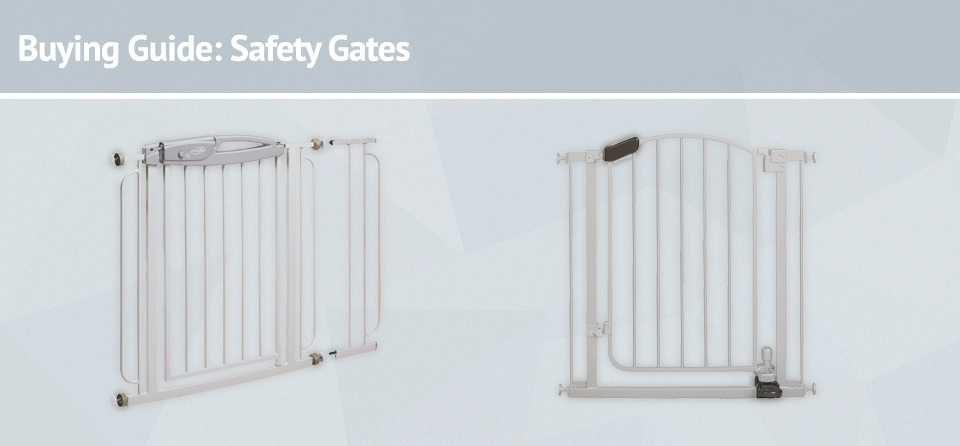Buying Guide: Safety Gates
Safety gates can prevent children or pets from straying into specific regions of a home. If you are ready to choose a safety gate for your household, consider these factors.
Types of Safety Gates
There are two primary types of safety gates.
Pressure-mounted gates stay upright by pressing against two walls. These gates can prevent a child or pet from entering a specific room or wandering up a flight of stairs. Some pressure-mounted gates come equipped with adjustable sliding panels that lock together to fill a space. These gates can be adjusted to fit a particular doorway or opening.
The most common materials used to design pressure-mounted gates are enamel-coated steel, plastic-coated wire, or wood. Narrower pressure-mounted gates may come with extension options to accommodate wide openings. Pressure-mounted gates can be used to secure a hotel room or other temporary lodging, as well.
Hardware-mounted gates are secured through brackets that are bolted to a set of walls for maximum stability. Hardware-mounted gates are essential if a child is old enough to potentially stumble into a pressure-mounted gate and knock it down.
Hardware-mounted gates can be used to secure the top of a stairwell. These gates are most often made of enamel-coated steel, aluminum, or wood. These gates typically allow for re-entry by incorporating a swinging component that can be unlocked and opened by an adult. Some hardware-mounted gates can be removed from their brackets entirely to re-open a doorway or stairway.
Choosing A Safety Gate
Look for a safety gate with a straight edge on top with holes that are close together. Ensure that holes are narrow enough to prevent a child’s toe or finger from getting caught in the gate. Some safety gates are made with a fine woven mesh screen to prevent accidental entrapment.
Other Factors To Consider
- Height: A safety gate should be at least three-quarters the height of your child or pet.
- Slats: Make sure the slats used to construct the safety gate are close enough together to prevent a child’s head from becoming caught in between slats. Be sure that the slat spacing will not allow an adventurous pet to slip through the cracks and into the next room.
- Latches: Some latches are dual-action, meaning that they require an adult to push down on the latch in order to release the swinging gate component. Squeeze latches require pressure to be applied on both sides of the latch before the gate will release. Pressure-release latches can be opened with a single hand. Some latches come equipped with a foot pedal for hands-free release.
- Indicators: Some safety gates include an alert mechanism that will indicate whether or not a latch is fully engaged. Gates can be fitted with a colorful indicator or an alarm that activates when a latch is disengaged.
A safety gate can be an important investment, so be sure to carefully consider why you need it, how you plan to use it, and which option will provide you with the optimal amount of protection for you and your family.







